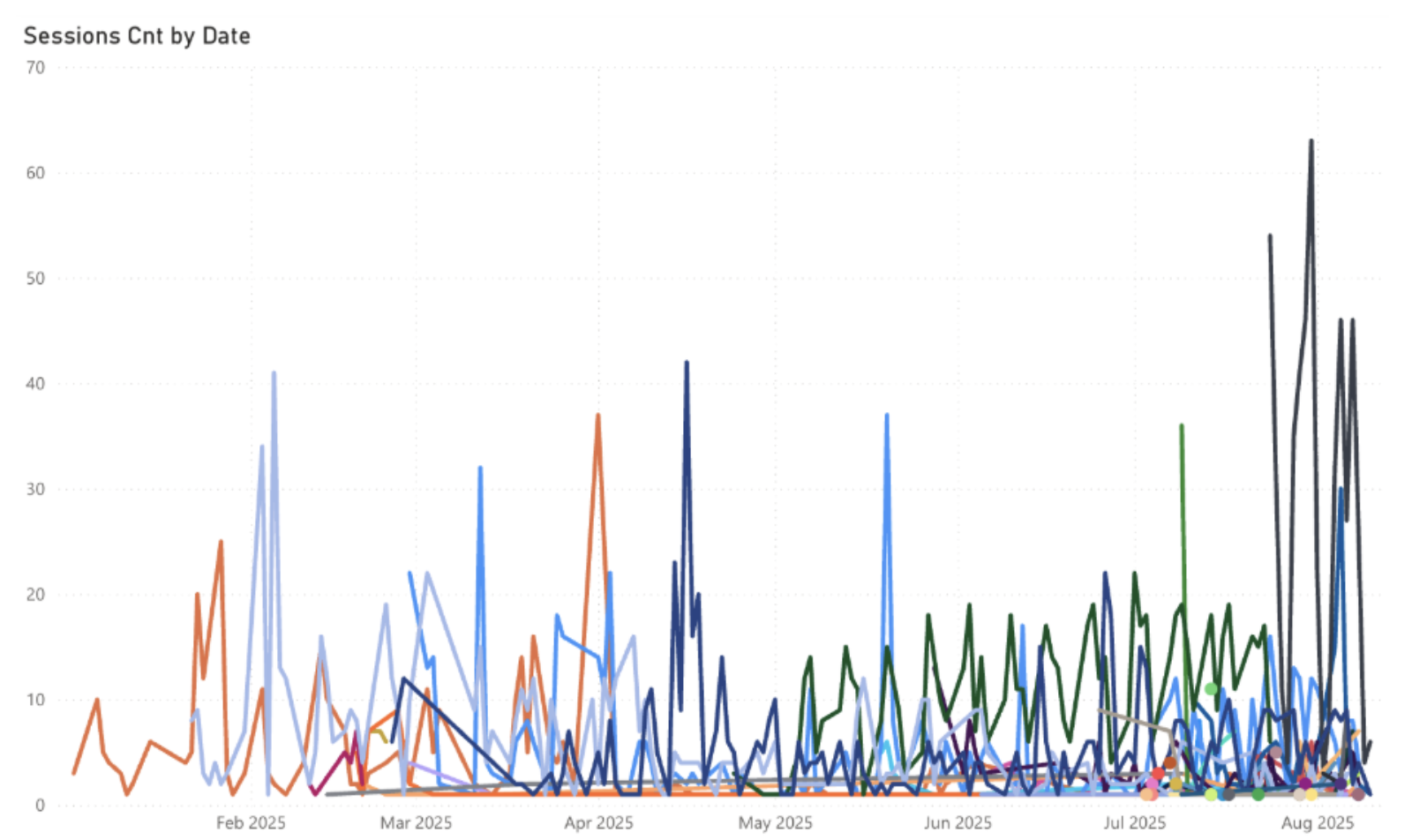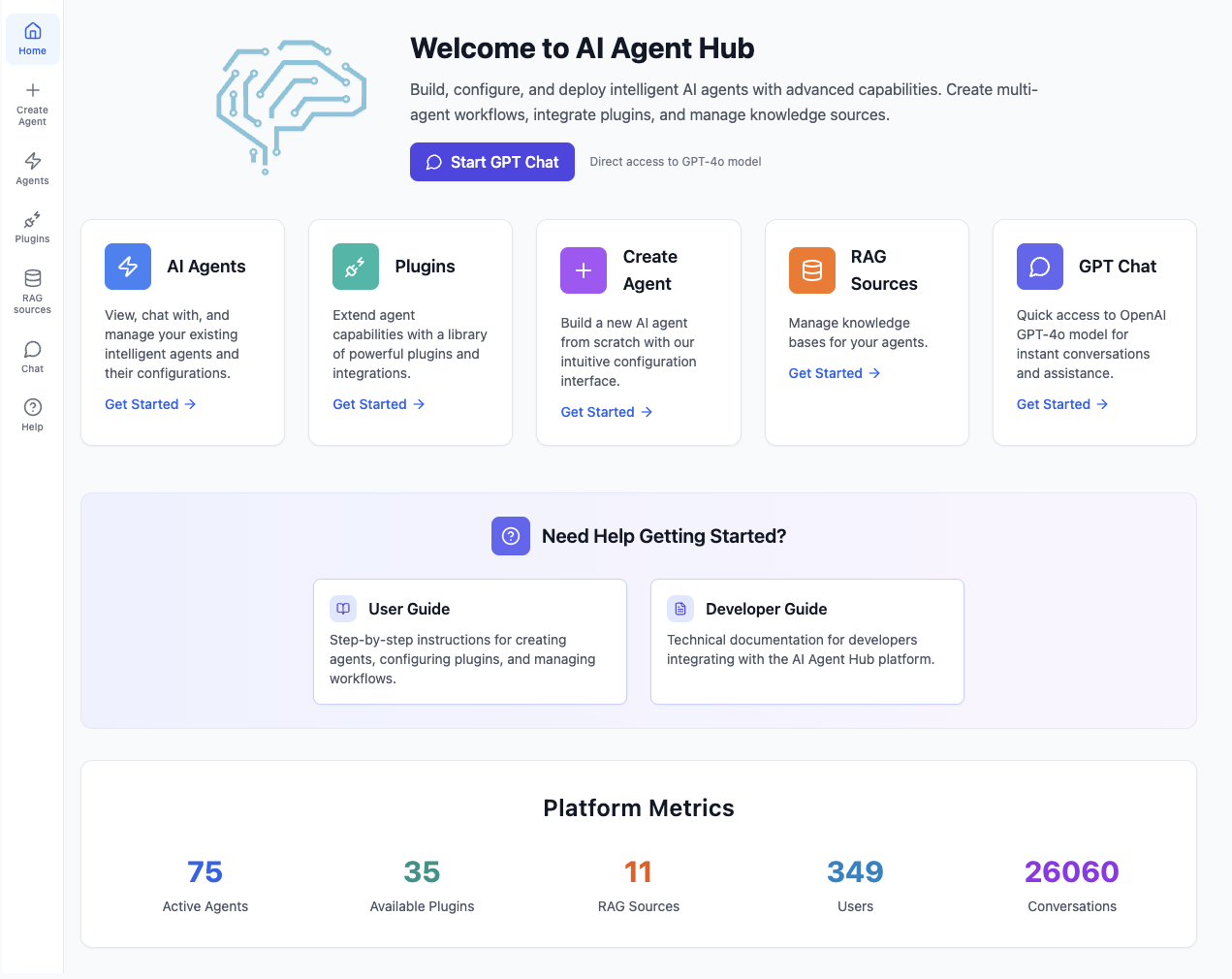2025 is deemed the year of AI agents. It’s all the tech news talks about. Yet, it’s difficult to find concrete use cases among all the marketing hype. To break the ice, here’s how it’s going at JustAnswer so far. How is it going for you?
Bottom line up front
We’ve built our own agentic platform so employees can automate their work. From a January 2025 project kickoff, itself inspired by an October 2024 hackathon, we have created 75 agent types. This July, we saw 1,500 agentic sessions, doubling the June totals, thanks to our first quasi-viral use case. As we continue to build our platform, we are also re-evaluating the build decision with each new release of commercial offering.

Job to be done
By mid-2024, after having experienced much success using genAI in our consumer platform, we turned our attention to automating internal work. We saw much promise, some awesome agentic framework, cool canned demo’s, and hopeful hackathon proofs-of-concept (POCs). But our most innovative employees reported having difficulty not with AI, but rather with what my colleague Rob Ellison coined “first mile issues”: how to sign in to enterprise systems for info retrieval, how to reuse other people’s modules, where to run the code, how to trace and monitor usage and performance, how to give access to other employees, etc.
After scanning the landscape of commercial technologies (COTS), we decided that building our own platform would get us to learnings sooner. That 250 of our 1,000 employees are technology professionals, a true luxury, enabled that option. So by January 2025, we dedicated one squad to paving this first mile.
What we built
In typical lean/agile fashion and under Nazar’s leadership, the team first built the simplest thing that could possibly work. First, we leveraged the Microsoft semantic kernel since we’re predominantly a MSFT shop. No need reinventing the wheel. Then, one module at a time, the team abstracted the aforementioned complexities. Development is AI-assisted (Cursor), of course.
At first, only developers had the background to leverage these capabilities. But in less than 90 days, the average employee could drag and drop said modules in working AI apps. The UI looks really sharp! Kudos to Yurii Beketov, Akash Ashok Mane, Misha Kondor, Nazarii Holovatiuk and Vladyslav Nestorko

Use Cases
Every week, we add capabilities to our agentic platform: sending/receiving email, app versioning, multi-agent synchronization, etc.
What do people do on our AI platform? There’s a huge range:
- Querying a 1,000 table DB in natural language via data-inferred documents created by AI
- Finding SMEs on an obscure topic who aren’t on PTO today by cross-referencing the wiki and the HRIS
- Automating various scheduling and staffing workflows
- Meeting notes-taking - our viral use case - that is encrypted, private, RBAC, customizable.
Our most complex agent uses four different LLMs over 12 API calls, and it decides when the job is done. It’s pretty slick!
Barriers
After steady early usage growth, we hit a plateau in late Spring. So we double down on practical educational workshops, with Mark Quinn as band leader.
While we are pleased with 1,500 agentic sessions per week, we are still a far cry from being surrounded by an army of agents doing our bidding. I see four critical dimensions:
- It’s hard for people busy chopping wood to pause to sharpen the axe. It requires a leap o’faith.
- People’s workflows are more complex than meet the eye. It’s still more difficult to describe the work to an agent than to a human.
- UX matters: replacing a small text config file with a toggle switch spurred adoption.
- The technology is still green and the success rate (low) of any one agentic step is unfavorable to chained or nested actions where errors compound.
Why did you build?
Our choice to build over buy is likely surprising to many. It’s certainly not where my money was at the outset because there are some mighty impressive roadmaps and pitches out there. Unsurprisingly, because it’s still so early, they contain lots of “forward-looking statements”. Since we are building a solution tailored to our environment, we get to cut corners that vendors building agentic products cannot. So, for now, we can move faster. But we know full well that won’t always be the case, so we’re continuously researching and evaluating vendors.
Going Forward
Until agentic platforms become commoditized, which, seeing the regular announcements by foundational players may not be long, we continue to develop hands-on experience. We believe that makes us more skillful in evaluating future agentic products, which we deem critical for our business.
There you have it. That’s us, midway through the (first) year of AI agents.